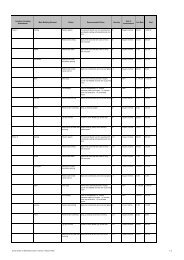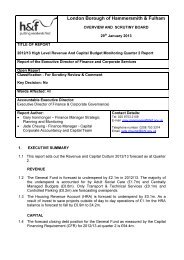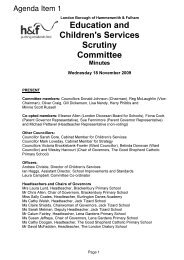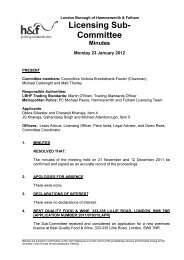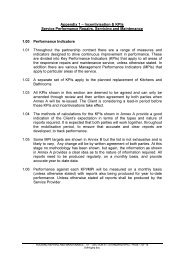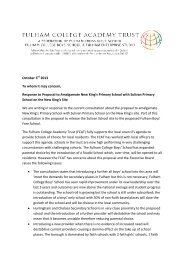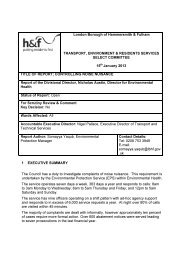Appendix 2 , item 46. PDF 26 KB
Appendix 2 , item 46. PDF 26 KB
Appendix 2 , item 46. PDF 26 KB
- No tags were found...
You also want an ePaper? Increase the reach of your titles
YUMPU automatically turns print PDFs into web optimized ePapers that Google loves.
participation. Local Authority teams have recognised that some of theiractivity aligns with RPA so have agreed that some of their work strands areincluded in RPA goals.4. Work is owned by four task and finish groups, with oversight from the LBHFRPA Executive Board. All have membership from borough officers andeducation providers.• Building Futures: led by Economic DevelopmentPriority is to support appropriate training and skills programmes betweenproviders and employers that support transition for young people from 18upwards via developing a Skills Plan and leading on White City CommunityBudgets.• Data Transition and Tracking: led by 14 – 19 AdviserPriority is to develop a Risk of NEET Indicator that can be used by all teamsworking with young people. This will use retrospective NEET data to producea robust profile to support schools and supporting teams with preparing youngpeople for transition to the next stage of their education or training career.Pilot being developed in Spring Term 2013 with four providers with full roll outin 2013/2014 academic year. In LBHF this is led by the transitionscoordinator.• Diverse Pathways: led by TBAP Head of Commissioning and School SupportPriority is to ensure that all providers who work with vulnerable young peoplewho are accessing Alternative Provision are using an appropriate qualityframework that is robust. The group is monitoring Alternative Provision. It isalso acting as a network of providers (mainstream and AP) and supports inareas such as new duties under the revised Ofsted framework.• Post-16 Progression: led by 14 – 19 AdviserPriority is to plan and share activity leading to full participation withmainstream providers. One example is to jointly develop a pre-Apprenticeshippathway for young people in Year 12, which allows them the option toprogress to Level 3 programmes or to go to an Apprenticeship course. Thegoal of this is to reduce the likelihood of NEET churn at Year 12/135. The collaborative nature of the membership of these groups has led to deeperunderstanding between providers and borough officers of where their areas ofwork have shared goals and outcomes, without duplicating workunnecessarily.



